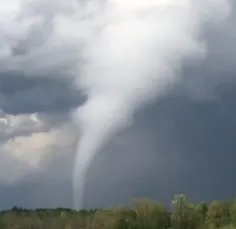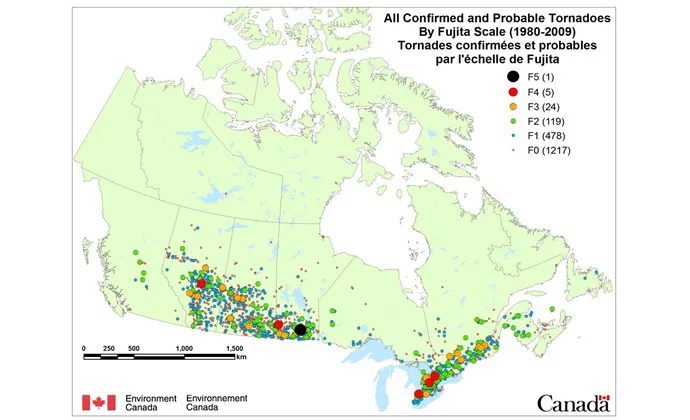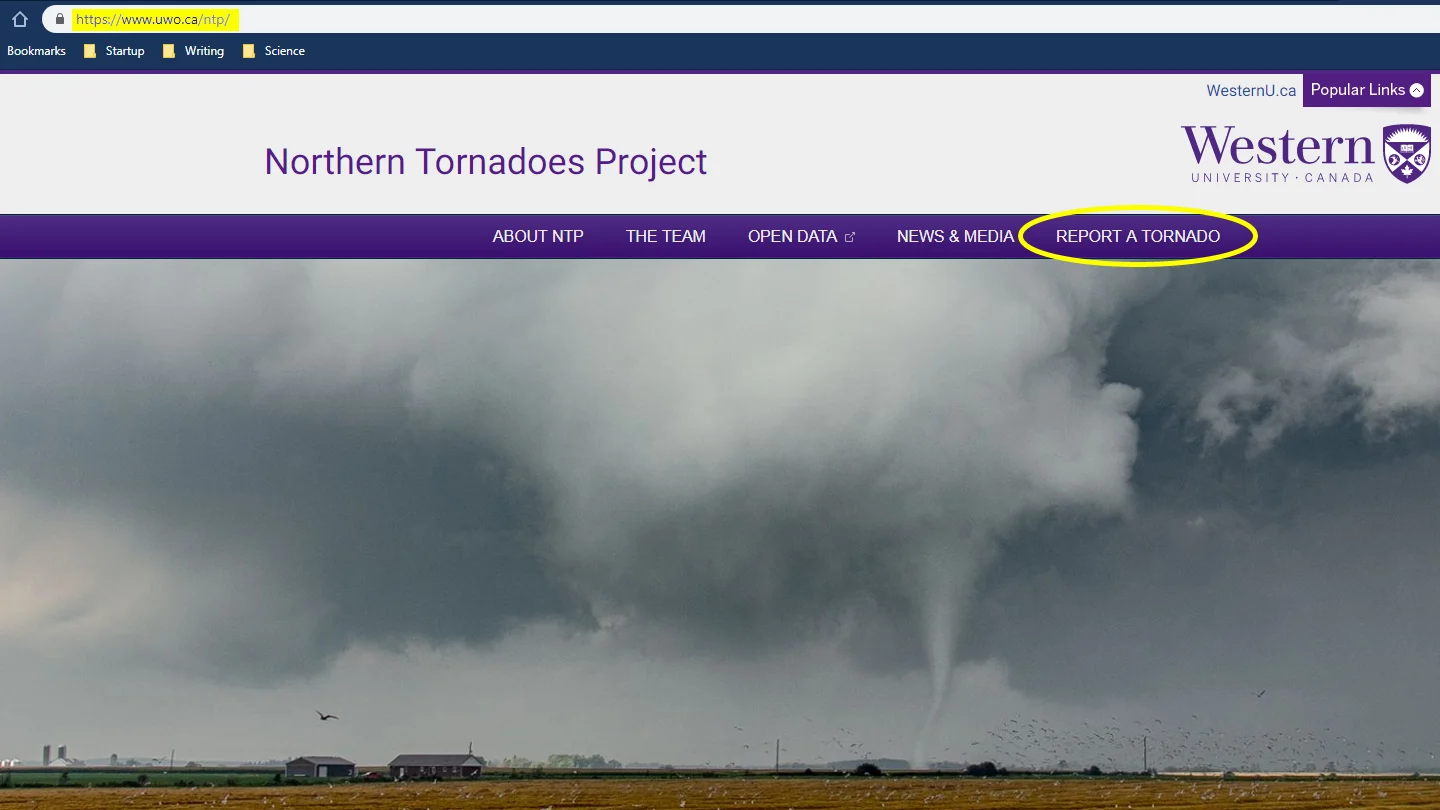
Northern Tornadoes Project goes coast-to-coast in hunt for Canadian twisters
Have you spotted a tornado in Canada? These scientists want you to report it!
In their quest to find every tornado occurring in Canada, Western University's Northern Tornado Project just received a big financial boost that has allowed them to go national!
According to Western News, the project has partnered with the Toronto-based social impact fund, ImpactWX, which works to improve peoples’ response and safety during severe weather events.
The Northern Tornado Project (NTP) started up in 2017, with the goal to discover all tornadoes occurring specifically in Northern Ontario - north of Lake Superior - through the use of satellite imagery and other technologies. After the success of that pilot project, they expanded in 2018 to include all of Ontario.
Now, with new funding - $6.4 million from ImpactWX and another $2.5 million from Western University - NTP has the resources to go coast-to-coast in their hunt for tornadoes.
"This boost allows us to have more resources, to go national," said Dr Greg Kopp, Lead Researcher for the Northern Tornadoes Project.
From acquiring satellite and radar imagery, to quickly travelling to remote areas, to assembling the right team of people - including Dr David Sills, who brings 20+ years as a severe weather scientist with Environment and Climate Change Canada to the project - Kopp says that these kinds of partnerships are necessary in order to have the financial resources needed.
"It requires quite a few resources to do [this kind of work], as you can imagine" Kopp said. "It's a big country, and we need a big team to do it."
CANADIAN TORNADOES??
While the United States, with its classic 'tornado alley' across the Plains states and through the Midwest, sees far more torado activity than Canada, we still experience more than our fair share of twisters here, north of the border, as well.
"If the United States wasn't there, we'd be right near the top of the list, in the world, for tornado activity," said Dr David Sills, the newly-appointed Executive Director of the Northern Tornado Project.
"The activity that happens in the northern United States extends into parts of Canada," Sills explained. "The big tornado alley through the central part of the U.S. extends into the Prairies, and the the midwest tornadoes extend into southern Ontario and Quebec, and even New Brunswick."

Confirmed and probable tornadoes across Canada from 1980-2009. Note Canada's only F5 tornado occurred in Manitoba. Source: Sills et al., 2012
According to Environment and Climate Change Canada, there is an average of 62 tornadoes per year across the country, which end up costing Canadians millions of dollars. Taking just one occurrance as an example, the six confirmed tornadoes that swept through Ottawa on September 21, 2018 (which included one EF-3, one EF-2 and four EF-1 twisters) are estimated to have caused close to $300 million in damages.
Knowing exactly how many tornadoes are actually occurring across Canada, including those that would not normally be reported due to their remoteness, will help to protect the public, but also provide valuable new data for the insurance industry and for research into Canadian tornadoes.
Watch below: Atlantic Canada only averages 1.2 tornadoes a year, and here's why
MOOSE DON'T HAVE CELLPHONES
The Northern Tornado Project has a very ambitious mission. They aim to locate every tornado that occurs in Canada.
This not only helps to protect the public, but it is expected to also improve the science of tornado forecasting.
One major obstacle is just how remote some portions of Canada really are.
"Most of our population is concentrated near the border, and there are big parts of Canada that don't have much population at all," Sills said.
"And the moose don't have cellphones, so it's hard to know what's happening in those areas."
Through dedicated forecasting of severe weather conditions across the country, plus the use of technology such as satellite imagery and radar scans, as well as aerial surveys and detailed field investigations, the NTP team can cover these remote areas in a way that has never been truly possible before.
"Going back over some of the [storm] events we've been looking at, over the last couple of years, we've been noticing older events and finding old tornadoes from years ago," Sills said. "We're discovering quite a bit of activity that we had no idea about before, and some of it has been a surprise."
Watch below: Rare tornado spawned in northern Canada, historic details here
SEE SIGNS OF A TORNADO? REPORT IT!
While satellite imagery and radar will play a large role in tracking down every Canadian tornado, the success of the Northern Tornado Project will also depend on the public.
Acting as citizen scientists, anyone who spots a funnel cloud, a tornado on the ground, or evidence of a damage path, can use the new NTP website, launched this week, to submit a report.

The front page of the Northern Tornado Project, at www.uwo.ca/ntp/. Click on Report a Tornado to submit your report. Credit: Western University/NTP
The NTP staff will also be relying heavily on social media, with a new batch of hashtags dedicated specifically for the project - #ONNTP for Ontario, #QCNTP for Quebec, #SKNTP for Saskatchewan, #ABNTP for Alberta, #MNNTP for Manitoba, and so on - that they hope the public will start using during tornado outbreaks, so that they can gather as much data as they can.
"We really depend on the public reports, through social media, and how that information gets out into the broadcast media, to determine where to look for these things, and then determine if it was a tornado or not," Sills said.
"It's really going to be kind of a Canadian community initiative for this Northern Tornadoes Project," Sills explained. "So, everybody from storm chasers, to people who run Facebook pages, to people who post on Twitter, it's all important data for us, and we need to put it all together, to get that national picture we're looking for."
Source: Western News | Northern Tornadoes Project











